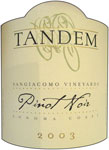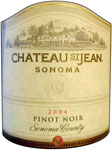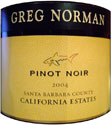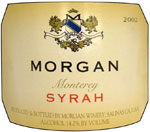![]()
Recent Articles

Get
Michael Vaughan's Buying Guide for today's Vintages Release today!
With a special $20 Discount
Click Here
A
Survivor's Guide to the 2006 California Wine Fair
Helping
National Post Readers Cope with Hundreds of Selections
©
Michael Vaughan 2006
National Post
Weekly Wine & Spirits Columnist
Saturday,
April 8, 2006
LIVE
WINE LINK
www.winefind.ca
(CLICK ON THE NAME - All
listings are automatically linked to the LCBO database)
If there is a product that interests you,
just click on the name below and you will instantaneously connected with
the LCBO database. The product will appear in blue and all you have to do
is click on the name again
and then the next screen will provide details along with the store search.
Just click on store search.
The number of bottles in each store is updated nightly. Call
the store first to see if stock still remains (each store phone number is
listed).
 I am looking at the 62-page California Wine Fair tasting book for
Monday's April 10 event at the Royal York Hotel (those wishing to attend
should go to www.calwine.ca).
Some 388 items from 106 wineries will be up for grabs. I wonder how
attendees manage to taste all these wines. Given the often rather crowded
conditions, it would be impossible to taste everything in the short 2-½
hour window provided. At $60 admission, one would like to believe that
would-be tasters would have some kind of tasting plan in place. Amazingly
enough, few if any are prepared for this oral onslaught.
I am looking at the 62-page California Wine Fair tasting book for
Monday's April 10 event at the Royal York Hotel (those wishing to attend
should go to www.calwine.ca).
Some 388 items from 106 wineries will be up for grabs. I wonder how
attendees manage to taste all these wines. Given the often rather crowded
conditions, it would be impossible to taste everything in the short 2-½
hour window provided. At $60 admission, one would like to believe that
would-be tasters would have some kind of tasting plan in place. Amazingly
enough, few if any are prepared for this oral onslaught.
I have tried to come up with the solution to the dilemma of so many wines, so little time. Getting the most from such massive tastings isn't easy. It is sad but true, that most attendees don't have a clue about what is being presented because they do not have an organized list of wines being tasted prior to the event.
There are three components of such a list. First, there is the "who" as in from which winery. Second, there is the "what" meaning what wine. These basics are critical to your tasting decisions. To begin with, many fans will search out specific wineries they want to taste. In the case of the California event, that is easy as there is a clear 3-page table of contents alphabetically listing the wineries (although 12 attending wineries are missing from the catalogue).
What isn't so easy is to figure out is which wines you want to taste. Suppose that you wish to start looking at whites, such as Pinot Grigio, or Chardonnay. There is absolutely no listing of wines being presented by varietal. To help National Post readers, I have created lists by varietal, which are available on my website. If you are looking for Pinot Grigio, for instance, 10 are available. For Pinot Noir, there are 35. Cabernet Sauvignon is the perennial biggy with some 80 entries plus all the Mertitage blends.
Finally, and perhaps most important, is where. Given that there are 106 attending wineries on some 79 tables, you need to know where the wine is. This is a serious problem, as tasting layouts are generally never provided in advance. Sometimes, the layout is done by winery alphabetically. This enables tasters to pop around the room to easily find the winery they are looking for.
In California's case, wines are basically laid out on tables sorted by agent. To find the wines you will need a table number guide, which, unfortunately, does not appear in the catalogue. To save National Post readers' time and frustration, I have the complete 79-table floor plan on my Web site (click here).
Of course, catalogues are rarely perfect. There isn't, for instance, any background information on the wines. Nor is there room on the page to make adequate tasting notes. Believe it or not, the worst-case scenario I have ever experienced is with catalogues that had no page numbers! You couldn't find anything.
Attendees should not have to waste time writing down the details of a wine. The price, availability (or expected arrival), LCBO number, agent's name/phone number, etc. should be available for every item presented. If not listed in the tasting guide, agents should be required to have a sheet with this information.
Having previewed 68 wines in a comparative blind tasting by varietal, Pinot Noir followed by Chardonnay are the most improved groupings. I am happy to report that all the 10 Chards tasted (from $15.55 to $71.40) have shed the excessive oak that has characterized some previous releases. They are bright and quite attractive, although in some instances, on the pricey side of the equation.
 All
eight Pinot Noir tasted (from $19.95 to $61.95) were extremely good. An
astonishing six scored above 89 points! The highest scoring red with 93
points was Tandem
Winery 2003 Sangiacomo Vineyard Pinot Noir from the
Sonoma Coast at $61.95. It is available from agent Zoltan Fekete at Kylix
International (table 79) and will be in
the LCBO's Fall Classics Catalogue. As Vintages has abandoned its
Classics Catalogue public preview tastings, this will be your only chance
to try it!
All
eight Pinot Noir tasted (from $19.95 to $61.95) were extremely good. An
astonishing six scored above 89 points! The highest scoring red with 93
points was Tandem
Winery 2003 Sangiacomo Vineyard Pinot Noir from the
Sonoma Coast at $61.95. It is available from agent Zoltan Fekete at Kylix
International (table 79) and will be in
the LCBO's Fall Classics Catalogue. As Vintages has abandoned its
Classics Catalogue public preview tastings, this will be your only chance
to try it!
Also, from the same winery is another terrific effort, Tandem 2003 Peloton Red at $35.95, which will be released (56 cases) in Vintages as an ISD (in-store discover) on July 8. This unorthodox blend of 81.5% red (40% Pinot Noir, 6% Sangiovese, 16% Zinfandel, 17% Syrah and 2.5% Carignane) and 18.5% white (14% Chard with .5% Viognier and 4% Gewurztraminer) is a first class and should not be missed.
 Other
outstanding Pinot Noir include, the rich, well-structured Testarossa
Vineyards 2004 Palazzio Pinot Noir about $45 (table
69), the elegant
Other
outstanding Pinot Noir include, the rich, well-structured Testarossa
Vineyards 2004 Palazzio Pinot Noir about $45 (table
69), the elegant  Chateau
St. Jean 2004 Sonoma County Pinot Noir at $24.95 (table
20) and plummy, ripe cherry flavoured Greg
Norman Estates 2004 Pinot Noir Santa Barbara at $23.95 (table
19).
Chateau
St. Jean 2004 Sonoma County Pinot Noir at $24.95 (table
20) and plummy, ripe cherry flavoured Greg
Norman Estates 2004 Pinot Noir Santa Barbara at $23.95 (table
19).
Another high-scoring, reasonably-priced red is Morgan
2003 Monterey Syrah at $29.95 (table
17).  Look for very tasty, well-structured, slightly smoky, plummy
baked cherry flavours. Note that their recently released delicious 2002 is
still available at Vintages (673764). To taste this and other wines, you
will need a list of what is being presented and where they are located.
National Post readers can find the appropriate lists on my website.
Look for very tasty, well-structured, slightly smoky, plummy
baked cherry flavours. Note that their recently released delicious 2002 is
still available at Vintages (673764). To taste this and other wines, you
will need a list of what is being presented and where they are located.
National Post readers can find the appropriate lists on my website.
Michael Vaughan's 2006
California Wine Fair Survivor's Guide
(to attend click
here)
![]()
Floor Plan of 79 tables &
wineries (A-Z) click
here
Sorted by winery (A-Z) with
wines & table location click
here
Sorted by major grape variety
(A-Z) with winery/wines & table location
(to make things easier, wines have also
been sorted by table number 1 thru 79)
![]()
WHITES
Chardonnay (69) click
here
Pinot Grigio (10) click
here
Sauvignon Blanc/Fume Blanc (26) click
here
![]()
REDS
Cabernet Sauvignon (84) click
here
Merlot (47) click
here
Petit Syrah (8) click
here
Pinot Noir (35) click
here
Syrah (23) click
here
Zinfandel (38) click
here
2001-2002-2003-2004-2005
Tasting Note Database
Our
tasting note database from December 31, 2000 to January 2006, covers every
Vintages release product for the past 61 months. There are more than
12,000 notes in the database data. Just enter the name of the product,
supplier name or CSPC number. Or you can search by type of wine, country
of origin, even wine agent! Nothing could be easier. Also you can get information on the agent by clicking on the
agents name, as well as current LCBO store inventory by clicking on
"Check
LCBO Availability", which will automatically tell you the
number of bottles at LCBO as of last night.
To
use our Tasting
Notes Database: click
here
|
** For All Visitors **
To
see the complete list of upcoming
products
from the
To
see the complete list of upcoming
products
from the |
Copyright Food & Beverage Testing Institute of Canada
2006
Prior written permission is required for any form of reproduction
(electronic or other wise) and or quotation.
Contact Michael Vaughan at
mbv@total.net